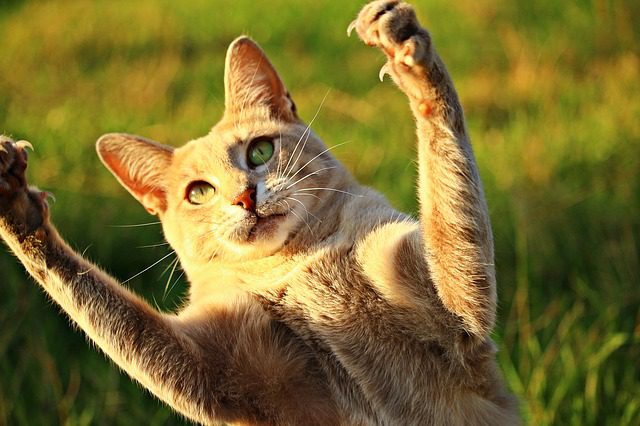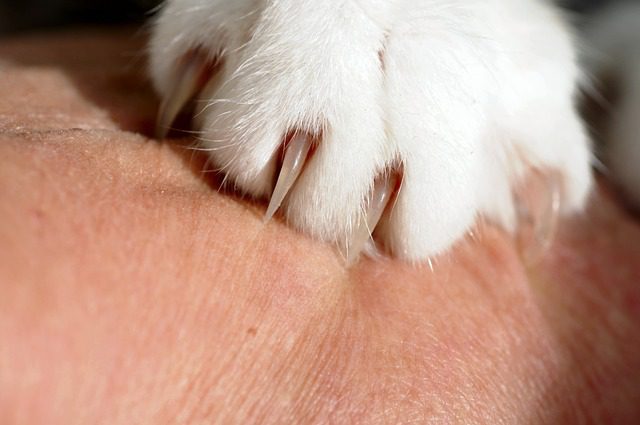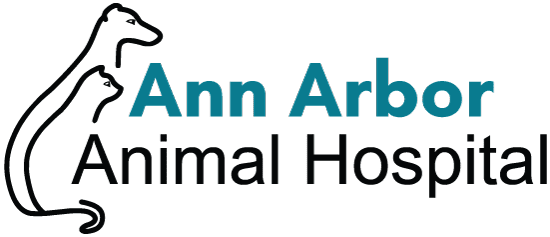
by Dr. Sara Barnhart
Declawing is often performed on cats at the time of spay or neuter to prevent unwanted scratching of furniture and other household items, as well as to prevent scratches to human family members. This post will cover how declawing is done, why it can be controversial, and some alternatives to declawing your cat.
The Controversy
Cat declawing is a controversial procedure that has been in the media recently after New York became the first state in the country to ban the surgery. Declawing a cat, also known as onychectomy, is already banned in most European countries, some Canadian provinces, and some U.S. cities such as Los Angeles, San Francisco, and Denver. This attention has led to people searching for alternatives to declawing.
The AVMA (American Veterinary Medical Association) recommends that, “Declawing of domestic cats should be considered only after attempts have been made to prevent the cat from using its claws destructively or when its clawing presents an above normal health risk for its owner(s).”

What is Involved in Declawing?
There is a misconception that the procedure is minor and pain free. Declawing consists of amputation of the third phalanx (end of the digit). This does not entail simply removing a nail and is akin to a human having the end of the finger removed at the first joint. The procedure is painful regardless of pain medications employed.
Short-term complications of the surgery aside from acute pain include infection, hemorrhage, swelling, and nerve trauma. There may be long-term complications post surgery including lameness, neuropathic pain, and behavioral problems. These complications increase with the age at which the procedure is performed.
Why Do Cats Need to Scratch?
Cats scratch for several reasons. Claws are integral for hunting and climbing, and scratching helps keep the necessary claw motion intact. Scratching also helps cats keep their claws conditioned and to communicate messages to other cats.
Alternatives to Declawing
1) Trimming Claws
Trimming nails regularly is one step in preventing injury or damage to household items or people. If possible, start trimming nails when your cat is young to get him used to the process. Lots of treats and positive reinforcement help things go smoothly. Search YouTube for instructional videos or ask your veterinarian for help if needed.
2) Synthetic Nail Caps
If claw trimming is not working or isn’t enough, consider plastic nail tips such as Soft Paws. These are caps that are glued on to trimmed front claws to prevent damage to furniture and injury to people. The caps last approximately 4-6 weeks and need to be replaced when they fall off. Nail caps come in an array of colors and styles.
3) Provide Appropriate Scratching Surfaces
Cats have definite preferences when it comes to what and where they like to scratch. Experiment with your cat to see what they prefer. Many different textures and styles of scratchers are available; possible options include carpet, sisal, cardboard, or wood scratchers that come in many shapes and sizes. Even a log found outdoors can act as a scratching post. Consider placing scratchers in areas where your cat sleeps or near furniture that you are trying to prevent them from scratching. Try placing catnip or treats on or near scratchers to encourage usage.
4) Environmental Enrichment
Some cats will scratch destructively if their emotional and physical needs are not being met. Environmental enrichment and stimulation are very important for feline mental health and may prevent excessive scratching behavior. Consult Cat Friendly Homes or OSU’s Indoor Pet Initiative for more information on environmental enrichment.
5) Synthetic Facial Pheromone Spray/Diffusers
Consider a feline facial pheromone spray, diffuser, or collar to help relieve stress and anxiety which may result in destructive scratching.
6) Protect Furniture and Household Items
If a beloved piece of furniture or household item has become a scratching post for your cat try covering the area in tin foil or double stick tape. These are surfaces that cats do not like to come into contact with and may break the scratching habit in those areas. For more tips, read this post by Dr. Franklin on stopping your cat(s) from scratching where they’re not supposed to.

Having one or more scratching posts available can help cats direct their scratching to acceptable places.
Please consult your veterinarian if you need further information regarding alternatives to declawing. Ann Arbor Animal Hospital is always happy to trim nails and place synthetic nail caps (they must be purchased elsewhere and brought to the visit) for your kitty!
Recent Posts
About Us
Ann Arbor Animal Hospital is a locally-owned animal hospital operating for over 90 years in Ann Arbor, MI.
